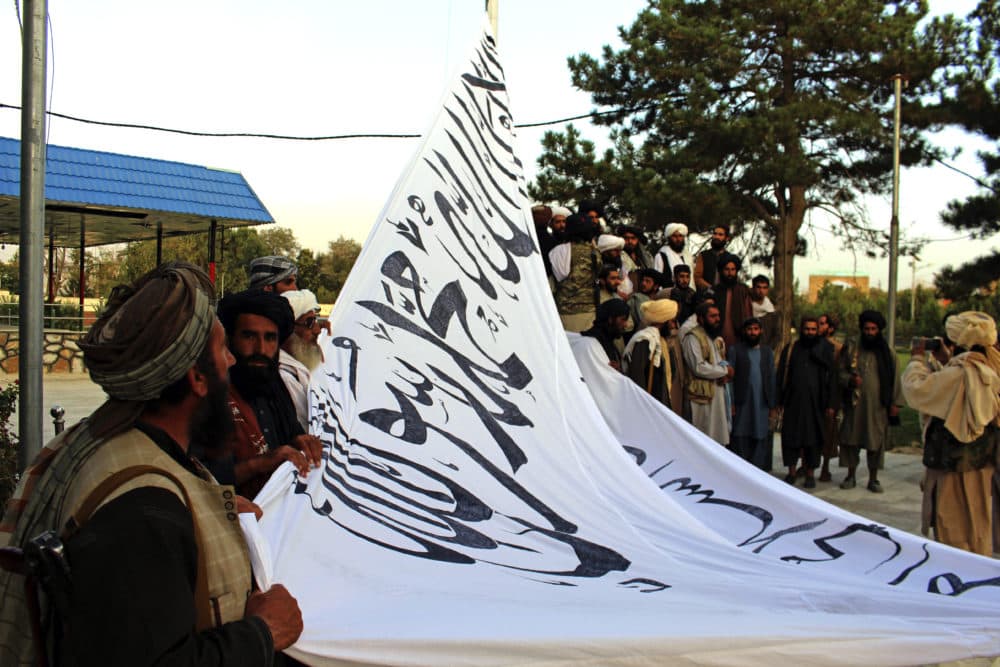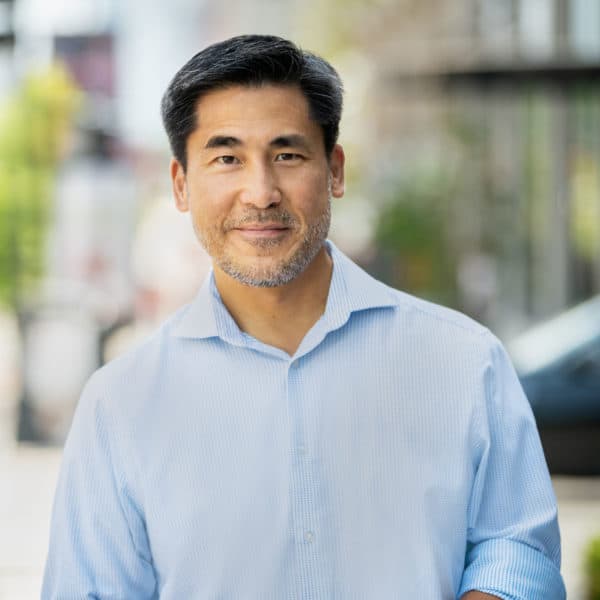Advertisement
A Modern History Of Afghanistan And The Taliban
Resume
People around the world are trying to make sense of the situation in Afghanistan and how the Taliban regained power.
The Taliban took control of much of Afghanistan for the first time in 1996, but the group’s story starts two decades earlier during the heat of the Cold War.
On Monday, President Biden said in his remarks about Afghanistan, “Our mission to degrade the terrorist threat of al-Qaida in Afghanistan and kill Osama bin Laden was a success.”
Robert Crews is a professor of history at Stanford University and a leading scholar on Afghanistan. Crews says the president’s claim is untrue because the Taliban remained and continued to work with radical groups like al-Qaida — which means al-Qaida “likely still exists in Afghanistan” today.
“Looking at this through kind of 20-year lens as we approach 9/11,” he says, “we now confront a moment in which some of the key features of that environment remain intact with the Taliban in Kabul and a host of radical groups still functioning in the country.”
The United States made the mistake of thinking its military defeated the Taliban, he says, when in reality the group “merely scattered” to save havens such as Pakistan.
The U.S. harmed and killed many civilians in Afghanistan while fighting against the Taliban on the battlefield — which increased support for the movement, Crews says. At the same time, Taliban leadership remained focused on restoring an Islamic state in Afghanistan.
Recent events in Afghanistan display the “strength and sophistication” of the Taliban despite that the movement isn’t ideologically compelling to most citizens, he says.
As for what happens next, Crews says that depends on the Taliban’s “use of force and the international community's capacity to temper that use of force to avoid what could be a horrible bloodshed, kind of catalyzed by the Biden administration's very clumsy withdrawal.”
Crews explains the historical context on how the Taliban first formed in the 1990s, broke apart and later emerged again.
Interview Highlights
On Afghanistan during the Cold War
“We might begin our story in April of 1978 when a group of leftist revolutionaries seized power by force of arms in Kabul and then began to embark on a revolutionary project to introduce socialism to Afghanistan. And early on, both Moscow and Washington began to invest in the future of the country, attempting to back particular groups to shape the future.”
“It really begins in the summer of 1979 when the United States begins to send aid to these emergent groups who claim they're fighting in the name of Islam. They're engaged in what they call a jihad. So they call themselves mujahideen. Their strength then causes Moscow to panic in part. And then we see the Soviet invasion of December 1979, and they managed to fight the Red Army to a standstill with the crucial backing of the United States and especially the covert operations of the CIA. The Red Army had found itself flummoxed by the guerrilla tactics of the mujahideen. But as the Soviets withdrew in 1989, the various mujahadeen parties worked together, but they never formed a cohesive whole. And so they maintained internal rivalries. They fought numerous battles against one another. So as the Soviets began to withdraw, there is a stage for a potential fight among mujahideen. But they managed to partial together temporary coalitions. As a coalition, [the mujahadeen] seize power in 1992 in Kabul and declare an Islamic state.”
On what led up to the Taliban taking control of most of Afghanistan in 1996
“Domestically, the coalition, the mujahideen parties proved to be untenable. They had deep personal rivalries among themselves. They destroyed much of Kabul in the process of civil war. Local populations everywhere suffered under the rapacious rule of different kinds of military commanders. So in this environment, a group of young mujahideen in the south in Kandahar emerged around 1994 claiming that they were in Robin Hood-fashion going to restore justice. They were going to fight on the side of the oppressed. And they had a vision drawn from the jihad, a kind of Islamic morality. And they began to call themselves, they adopted a title of modesty upon themselves, essentially students or Islamic students, Taliban.
“And so in 1994, they began to operate in this province, really as a force to guard transport and to safeguard the roads. And very importantly, they began to circulate a kind of mythology about themselves as people who have righted wrongs and reimpose a kind of morality. And they will have a vision to take control of the entire territory of Afghanistan as a national government, and that is to attract the attention of international sponsors. Pakistan is very interested in the success of this group because it has its own geopolitical vision in which Afghanistan is essential to its competition with India. You may know the story of oil companies that began to get involved in Afghan politics in the early 90s because the oil markets, the oil resources of oil and gas, these vast reserves in Central Asia began to attract the attention of oil companies who wanted to gain access to these resources, but without working with either Russia or Iran. This is the first moment we see the Taliban really emerging in the imagination of regional and international actors as a potential national government for Afghanistan.”
On how the Taliban ruled the country back then and what could happen now
“[The Taliban] have what we might call in an American context a brilliant ground game of interacting with local leaders, using threats, using targeted assassinations, using persuasion. And they very skillfully send advance teams of preachers forward to go to mosques, to begin to kind of soften the ground for their rival. And they offer a choice: Either surrender and we'll leave you alone or we'll fight you and kill you, all while trying to essentially decapitate the leaders of local society. And it leads them to the west of the country and then to Kabul in September 1996, where it's clear that they have an agenda of imposing an order that is at odds with urban Afghan society.
“There are different agendas that people see in the Taliban. Some see a restoration of Pashtun power. Some like the idea of an Islamic order, but immediately clear in September as they enter Kabul, they themselves are committed to their own agenda, which is a draconian understanding of law, of the policing of public space. They're about expelling women from public view. This is when they introduced these policies of forcing men to attend mosque prayers, to grow beards of a particular length. And they begin to engage in campaigns of public violence to attempt to intimidate the Afghan population. Stonings, assassinations. They turn a football stadium into a killing field. And this alienates Kabul society and alienates many supporters except Pakistan, Saudi Arabia and United Arab Emirates, who remain their staunch international backers. Meanwhile, the society is slowly taken under the control of the Taliban as they move. But importantly, they don't take the entire country. In countries where they confront other ethnic groups. For example, the Hazaras in Mazar-e-Sharif in the north. In Mazar, they commit acts of genocide. In 1998, they mass murder of several thousand Hazara boys and girls and engage in sexual violence.”
On the relationship between the Taliban and al-Qaida
“There had been a long history during the 1980s of Arab fighters, really fighters from all over the world, seeing in the Afghan jihad against the Soviet Union a sacred cause of global importance. So Osama bin Laden and those who had become al-Qaida were among hundreds of these fighters, perhaps thousands from Saudi Arabia and elsewhere. Al-Qaida and the Taliban were always distinct. They had different agendas. But there was a degree of overlap in terms of some ideological features. And broadly, I think the Taliban leadership liked the idea of keeping people like al-Qaida under their umbrella because it gave them leverage and gave them some international significance.”
Alexander Tuerk produced and edited this interview for broadcast with Todd Mundt. Allison Hagan adapted it for the web.
This segment aired on August 17, 2021.
